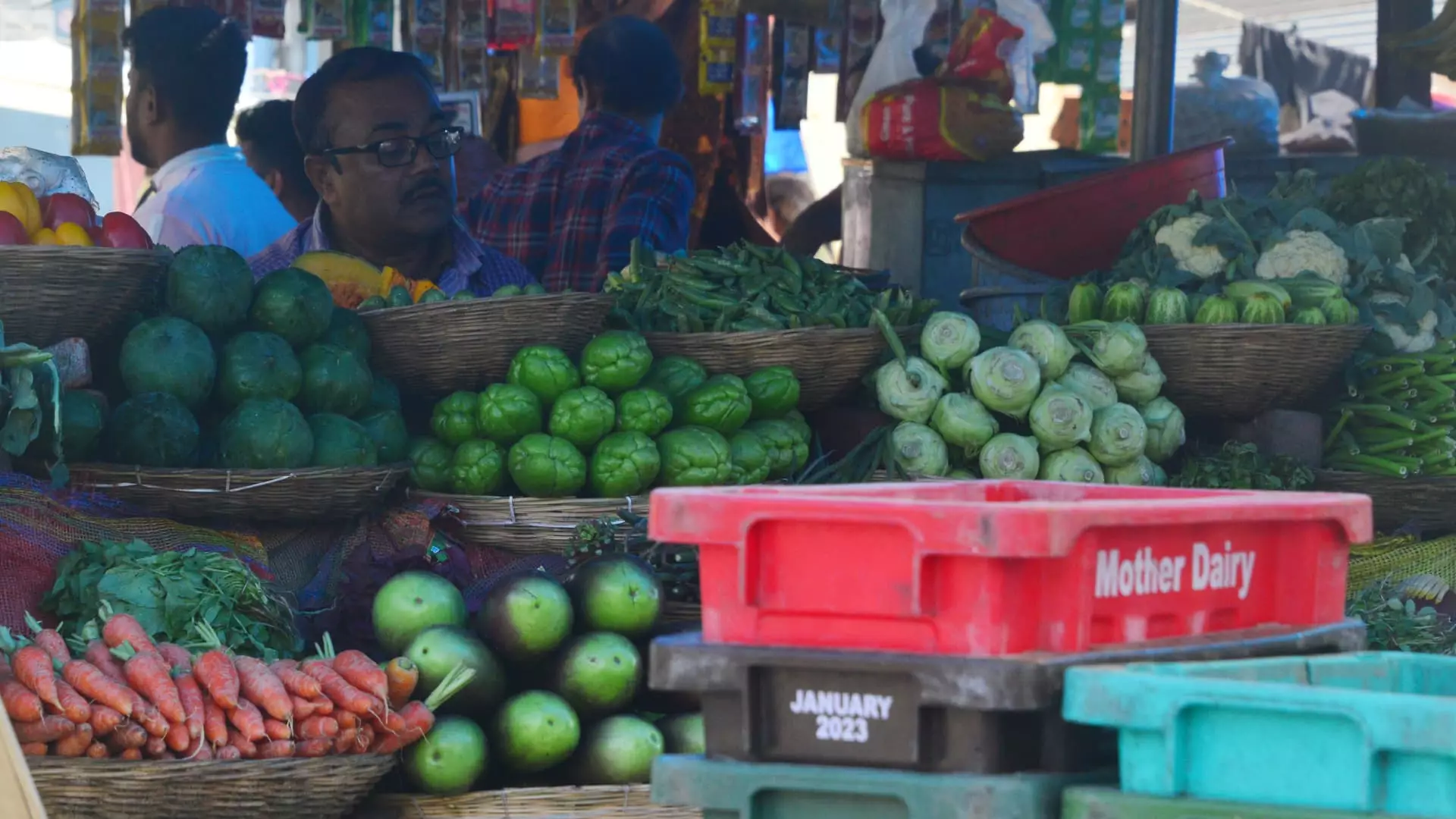India’s inflation scenario presents a complex narrative as it showed signs of relief recently, with the annual rate declining to 5.22% in December, marking the second consecutive month of decrease. This figure fell slightly short of economists’ predictions, which anticipated an inflation rate of 5.30%. Noteworthy is that the inflation rate reached its lowest level since August 2024, hinting at a potential shift in economic policies. Such drops in inflation might bolster arguments for interest rate cuts by the Reserve Bank of India (RBI), particularly in light of prior figures where inflation surged to a staggering 6.21% in October, exceeding the RBI’s upper tolerance threshold of 6%.
The recent statistics released by the Ministry of Statistics and Programme Implementation reveal several key dynamics at play. A vital component of these inflation metrics is food prices, which saw a decrease to 8.39% in December, down from 9.04% in November. This reveals a significant cooling in sectors like vegetables and cereals, alongside a noteworthy drop in inflation rates from 42.18% in October to 26.56% in December for vegetables alone. Unfortunately, despite these averages declining, certain staples such as peas and potatoes have endured substantial price hikes, complicating the overall outlook.
Agriculture remains a cornerstone of India’s economic framework, and projections from RBI Governor Sanjay Malhotra suggest that pressures on food prices may persist throughout the fiscal third quarter, easing only as the winter harvest arrives. Seasonal adjustments in vegetable prices and a projected improvement in crop yields could signal better availability and lower prices in the near future, thus ultimately influencing inflationary trends.
Policy Implications and Economic Growth Insights
The sustained decline in inflation offers the Reserve Bank of India a window to reconsider its monetary policy approach, especially amid signs of economic slowdown. The GDP growth rate has markedly decreased to 5.4% as of September’s fiscal quarter, an alarming figure that is approaching a two-year low. Consequently, market analysts suggest that this inflation data, coupled with sluggish economic activity, could prompt the RBI to initiate an easing cycle at the upcoming Monetary Policy Committee (MPC) meeting. Predictions from various economic experts indicate a likely cut in the repo rate by 25 basis points, bringing it down to 6.25%.
However, the complexities facing the Indian economy are exacerbated by the depreciation of the Indian rupee, which recently hit an all-time low against the U.S. dollar at 86.58. Such currency challenges complicate the ability for the RBI to implement aggressive rate cuts as a means to revive economic stagnation, as a weakened currency could compel a more conservative approach to monetary easing.
As the RBI transitions to new leadership under Governor Sanjay Malhotra, there is speculation about a less hawkish stance in monetary policy compared to his predecessor, Shaktikanta Das. Previously, Das maintained a steady interest rate of 6.5% in December amidst divided opinions within the central bank. The change in leadership raises questions about future policy directions, particularly as market players keenly observe the upcoming MPC meeting for indications of shifts in strategy.
The sentiment surrounding India’s growth prospects remains mixed. Bank of America adjusted their GDP forecast downwards from 6.8% to 6.5% for the fiscal year ending March 2025, citing unclear indicators about the strength of the economic recovery. While there are optimistic signs in specific sectors like agriculture and energy consumption, broader economic signals such as credit growth and consumer spending suggest a fragile foundation for sustained growth.
India’s declining inflation hints at a potential for economic recalibration, with policymakers at the RBI carefully balancing the dual objectives of fostering growth while managing currency stability. The upcoming months will be crucial as the RBI’s moves will be under scrutiny from investors, consumers, and analysts alike, all looking for signs of stability and recovery amid a challenging economic landscape. Overall, understanding the interplay between inflation, agricultural outputs, and monetary policy roles will be pivotal in navigating the road ahead for India’s economy and its resilience in the face of fluctuating economic indicators.

Leave a Reply